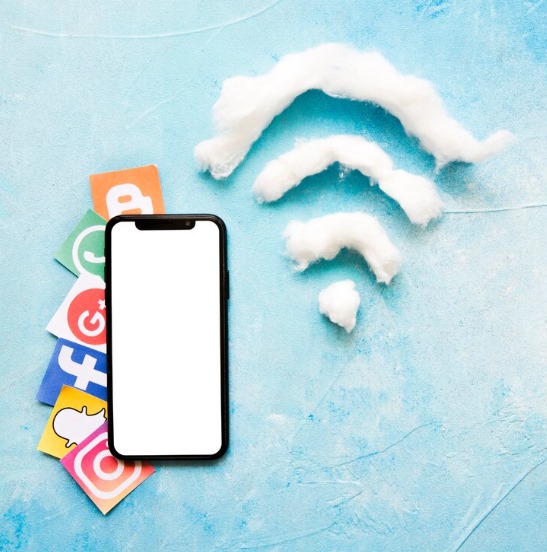
Encountering Wi-Fi connectivity issues on your iPhone can be highly frustrating, especially when it is a crucial tool for various online activities. Whether you’re facing slow speeds, intermittent connections, or the outright failure to connect, Wi-Fi problems can significantly disrupt your workflow and overall online experience. However, there’s no need to panic because you can take several troubleshooting steps to address these issues effectively and restore reliable internet access to your device.
1. Check Wi-Fi Network Settings:
To troubleshoot Wi-Fi connectivity on your iPhone, first, make sure that your device’s Wi-Fi is activated. Navigate to Settings > Wi-Fi and toggle the Wi-Fi switch to ensure it’s turned on. Confirm that your iPhone is connected to the appropriate network. If it’s linked to the wrong network or one with a weak signal, tap on the network name and choose the correct one from the list.
This step ensures that your iPhone is properly connected to a strong Wi-Fi network, which ensures reliable internet access. By verifying these settings, you can address potential issues related to incorrect network connections and signal strength, enhancing your overall Wi-Fi experience on the device.
2. Restart Your iPhone and Router:
Addressing Wi-Fi problems involve restarting both your iPhone and router. To begin, power off your iPhone by pressing and holding together the Power button until the slider pops up, then slide it to turn off. Similarly, restart your router by unplugging it for about 30 seconds, and then plug it back in.
Once both devices have restarted, try reconnecting to Wi-Fi to check if the issue persists. This uncomplicated troubleshooting step often resolves common Wi-Fi connectivity issues by refreshing the connections of both your device and the router.
3. Forgetand Reconnect to Wi-Fi Network
If you continue to face connectivity issues, consider forgetting the Wi-Fi network and reconnecting to it again. In your Wi-Fi settings, tap on the name of the network causing trouble, and then select “Forget This Network.
Subsequently, reconnect to the network by choosing it from the available list and entering the password if prompted. This step often resolves persistent Wi-Fi problems by clearing any stored connection data and establishing a fresh connection with the network.
4. Reset Network Settings:
Resetting your iPhone’s network settings can resolve persistent Wi-Fi issues. To do this, navigate to Settings > General > Reset, then tap “Reset Network Settings.” It’s important to note that this action will erase all saved Wi-Fi passwords and other network-related settings.
After the reset, you’ll need to re-enter Wi-Fi passwords. This process often fix stubborn Wi-Fi problems by clearing any network configuration issues or conflicts on your device.
5. Update iOS Software:
To improve Wi-Fi connectivity, make sure your iPhone has the latest iOS software. Here’s how: Go to Settings > General > Software Update. Check for available updates and install them if any are found.
Software updates often contain fixes and enhancements that can help resolve Wi-Fi problems. Keeping your iPhone’s software up to date makes sure that you have the latest improvements for a better overall experience with Wi-Fi connectivity.
6. Disable Wi-Fi Networking Services:
You can resolve Wi-Fi issues by turning off Wi-Fi networking services on your iPhone. Follow these steps: Go to Settings > Privacy > Location Services > System Services. Then, toggle off both Wi-Fi Networking and Location-Based Wi-Fi. Some users have reported that turning off these services can effectively address Wi-Fi problems.
This action may help eliminate potential interference or conflicts related to location-based Wi-Fi services. After making these changes, test your Wi-Fi connectivity to see if the issue improves.
7. Reset Router Settings:
If other devices on your network are experiencing Wi-Fi issues, consider resetting your router to its default settings. This can help address problems related to your router. Alternatively, you can reach out to your internet service provider for assistance and support in troubleshooting and resolving router-related issues. Resetting the router may resolve any configuration issues or conflicts causing Wi-Fi problems for multiple devices on your network.
8. Contact Apple Support:
If you’ve followed all the previous steps and continue to experience Wi-Fi connectivity problems on your iPhone, it might be a hardware issue. In this case, it’s recommended to reach out to Apple Support or visit an Apple Store or authorized service provider for further assistance and diagnostics. These professionals can help identify any hardware-related issues and provide appropriate solutions to resolve your Wi-Fi problems.
Conclusion
Troubleshooting Wi-Fi connectivity problems on iPhone devices can often be resolved through a series of systematic steps. Users have various options to resolve common Wi-Fi issues, from checking network settings and restarting devices to resetting network configurations and updating software.
If problems persist even after attempting these steps, it’s advisable to consider hardware-related issues and seek assistance from Apple Support or authorized service providers like Fixo. By following these guidelines, users can effectively address and overcome Wi-Fi connectivity challenges, ensuring a seamless online experience on their iPhone devices.





